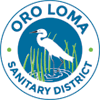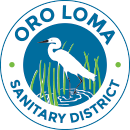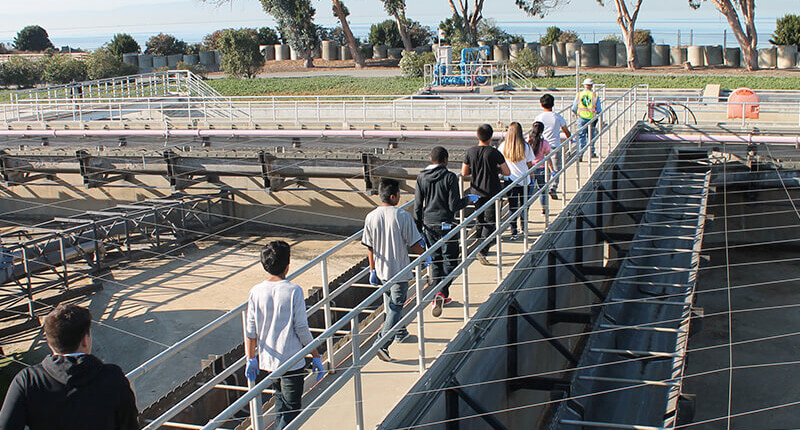Oro Loma Sanitary District Policy and Standard Procedure
I. POLICY
It is the policy of The Oro Loma Sanitary District (the “District”) to ensure the rights of citizens under the First Amendment of the United States Constitution are protected, while implementing policies and procedures that protect the health, safety, welfare, and personal privacy of the District’s employees and the general public who do business with or use the services of the District, as well as ensure the continued safe operation of District facilities. This policy (“Policy”) delineates portions of the District Property (as defined herein) that are accessible to and observable by the general public from those portions that are accessible on a limited basis, establish rules of conduct that are applicable to all District Property, and specify procedures for District employees who encounter those who wish to access District Property for observational purposes.
II. RESPONSIBILITIES
All general public members entering the District property are responsible for adhering to the rules of conduct at all District property as stated in this policy in order to maintain an environment that promotes orderly administrative and business operations, and to take reasonable and prudent actions to protect the health, welfare, safety, and personal privacy of all persons at District Property as well as critical District facilities and infrastructure.
III. PROCEDURE:
A. DEFINITIONS:
1. LIMITED ACCESS AREA: any designated area on District Property that is not generally open to or occupied by the public; is open to or occupied by the public on only a limited, as-needed, or by-invitation basis; or is in an area generally open to or occupied by the public in close proximity to where private third parties conduct business with District employees. Limited Access Areas may be designated by doors, physical barriers, building design features, signage, reception desks or stations, stanchions, ropes, fencing, bollards, or other visible indications. The lack of visible indications shall not prevent the District from considering or treating an area as a Limited Access Area. The District shall retain the right to verbally instruct third parties that an area is a Limited Access Area. Without limiting the generality of the foregoing, Limited Access Areas include but are not limited to the following:
-
- Employee offices;
- Employee workspaces including copy rooms, mailrooms, and break areas;
- Employee parking lots, storage areas, access points, or other outside areas marked for use by District employees or vehicles only;
- Hallways, staircases, restrooms, elevators, and other areas by purpose or function restricted to providing access solely to other Limited Access Areas;
- Maintenance, storage, and warehousing facilities;
- Public works and public safety buildings, except for any designated waiting or reception areas therein; and
- All sewage collection and treatment facilities, including without limitation, the entirety of the Wastewater Treatment Plant.
2. DISTRICT OFFICIAL (for the purposes of this policy):
-
- The District General Manager, or his or her designee;
- Any person providing security services in any District Property pursuant to contract with the District or with any person, firm, or corporation managing a District Property on the District’s behalf;
- With respect to any building, facility, area, or space assigned to a District department, division, or agency, the director or manager of such department, division, or agency, or any person that such official specifically designates in writing.
3. DISTRICT PROPERTY: any real property owned by the District or in which the District has a property interest or property management responsibility.
4. PUBLIC AREA: any area on District Property that is generally open to general public access and occupancy that is not otherwise designated as a Limited Access Area. The Public Areas are limited to parking lots open to the public, the entrance and lobby of the District Administration Building, and the District’s Boardroom.
5. RULES OF CONDUCT: specific guidelines set forth in this policy.
B. RULES OF CONDUCT ON DISTRICT PROPERTY:
1. ALL DISTRICT PROPERTY:
-
- No person shall enter, attempt to enter, or remain in any areas of District Property for any purpose other than to conduct legitimate business with District offices or tenants located at District Property, or to exercise other constitutionally protected rights. The appropriate District Officials may adopt specific policies with respect to District Property under their custody and control to manage conditions for use of such District Property including without limitation to establish hours and terms of use, reservation protocols, use and user priority, and fees for use.
- No person shall engage in any activity on District Property that would constitute a violation of federal, state, or local law or regulation.
- No person shall engage in activity that disrupts or interferes with the normal operation or administration of District business at District Property, lawful use by District employees and authorized users at District Property, or District-permitted activities.
- No person shall stalk, harass, threaten, intimidate, or otherwise compromise the wellbeing and safety of District employees or private third parties lawfully using District Property. Photography, audio recording, or video recording does not, in and of itself, violate this Rule of Conduct. Likewise, conduct that would otherwise violate this Rule of Conduct shall not be permitted merely because the conduct involves photography, audio recording, or video recording.
- No person shall interfere or obstruct the free passage of any individuals in, on, to or through the Public Area, or District employees or authorized third parties in, on, to, or through any District Property, including without limitation Limited Access Areas. Interference or obstruction includes, but is not limited to, standing in, blocking access to, or occupying areas for purposes of photography, audio recording, or video recording.
- No person shall photograph, audio record, or video record in such a manner that would allow capture of, access to, or disclosure of private, personal, confidential, sensitive, or privileged information of private third parties and District employees.
2. LIMITED ACCESS AREAS:
-
- Limited Access Areas shall be accessible only to the following:
- employees, elected officials, and appointed officials of the District; and
- private parties but only on a limited, as-needed, or by-invitation basis, to include those private parties accessing a Limited Access Area for the express purpose of conducting business with District employees.
- Photography, audio recording, and video recording is prohibited in Limited Access Areas, except as follows:
- any District Official may authorize audio or video recording or photography in Limited Access Areas, for good cause shown, with the consent of all parties to be recorded or photographed, provided that any District Official may impose appropriate and reasonable conditions on the recording or photography to prevent the unauthorized disclosure of confidential information; and
- audio and video recording and photography may be permitted in Limited Access Areas when specifically authorized by applicable law or agreements.
- The restrictions in this section shall not apply to individuals who are filming a Limited Access Area from a publicly accessible location outside of the Limited Access Areas.
- The District’s Operations Training Room is located within the Wastewater Treatment Plant and is a Limited Access Area. Without limiting the foregoing, if a meeting subject to the Ralph M. Brown Act, Government Code Section 54950 et seq., is noticed to occur in the District’s Operations Training Room, any member of the public shall have the right to enter the Operations Training Room without prior approval, invitation, or accompaniment from a District official. Individuals attending such meetings shall be limited to traveling directly from the Wastewater Treatment Plant’s entrance gate to the District’s Operations Training Room along the paved road and path. All other areas of the Wastewater Treatment Plant shall remain Limited Access Areas at all times.
- Limited Access Areas shall be accessible only to the following:
C. EXCLUSION
If a person violates these Rules of Conduct while in or upon District Property, any District Official may eject and direct such person to leave District Property. It shall not be necessary for such District Official to allege any crime or other violation of applicable law other than these Rules of Conduct in order to support such exclusion; provided that violation of such exclusion may be deemed a trespass under applicable law. Individuals who repeatedly violate these Rules of Conduct may be excluded from District Property on a longer-term basis, as determined appropriate by the General Manager.



